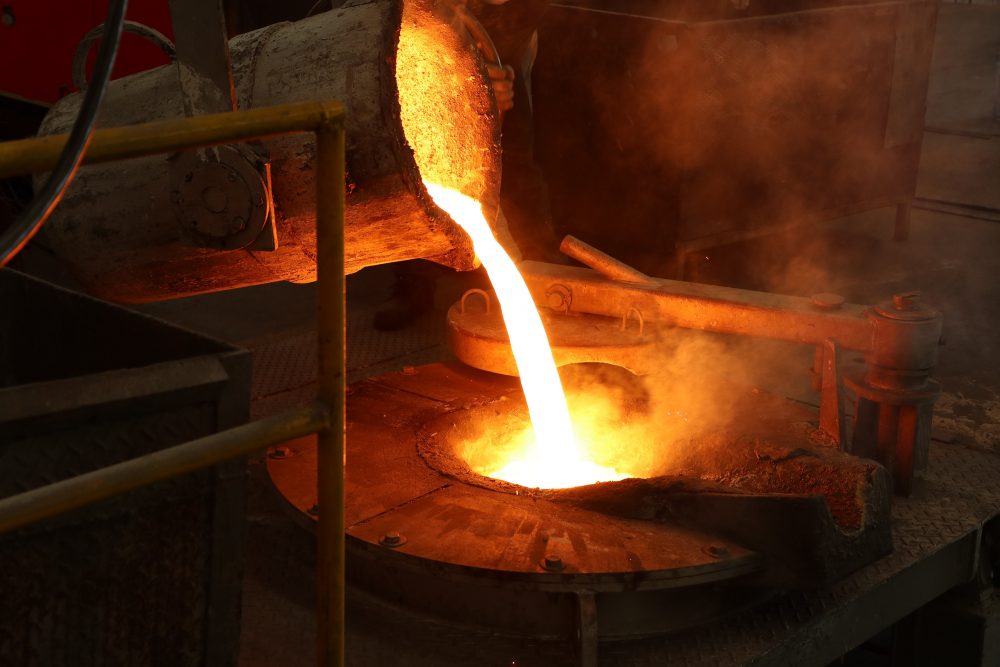Address
304 North Cardinal
St. Dorchester Center, MA 02124
Work Hours
Monday to Friday: 7AM - 7PM
Weekend: 10AM - 5PM
Address
304 North Cardinal
St. Dorchester Center, MA 02124
Work Hours
Monday to Friday: 7AM - 7PM
Weekend: 10AM - 5PM

Hey there, fellow investors and metal enthusiasts! Today, we’re going to take a deep dive into a critical question: how is brass made? And the process of making brass, a versatile alloy that has captured our attention for centuries. So, buckle up and let’s get started!
Brass, my friends, is a fantastic alloy that combines the strengths of copper and zinc. This marriage of metals results in a material that boasts a wide range of uses and applications.
Brass has a rich history, having been used by ancient civilizations, artisans, and even modern industries. But how is it made?
The key ingredients in brass are copper and zinc. Copper, with its impressive electrical conductivity and malleability, forms the backbone of this alloy.
Zinc, on the other hand, lends its unique properties to brass, enhancing its strength, corrosion resistance, and workability.
These two metals come together in a harmonious union to create the remarkable material we know as brass.
Let’s walk through the process of transforming copper and zinc into beautiful brass:
We start by sourcing high-quality copper and zinc from reliable suppliers. The proportions are:
The copper and zinc are individually smelted, refining them into their respective metal forms. They should be melted in a furnace at around 1200°C.
Once we have the pure copper and zinc, they are melted together at specific temperatures. The molten metals blend together, forming a homogeneous mixture.
The molten brass is poured into molds or ingot forms, allowing it to cool and solidify.
After solidification, the brass undergoes cooling, annealing, and other treatments to achieve desired mechanical properties. This step ensures the brass meets the specific requirements for its intended applications.
While copper and zinc exist in nature, they are not found in their pure metallic forms. Extracting copper and zinc from their respective ores involves complex mining and refining processes.
Thus, brass itself is not considered a natural material. Instead, it is a brilliant result of human ingenuity, leveraging the properties of these base metals to create a versatile alloy.
Brass comes in various types, each with its own unique composition and characteristics. Let’s take a quick look at a few notable ones:
The ratios of copper to zinc in brass can vary, depending on the desired properties. Typical proportions range from 60% to 90% copper and 10% to 40% zinc.
Adjusting the composition allows us to tailor the brass to meet specific needs, striking the perfect balance between malleability, strength, and corrosion resistance.
While copper and zinc form the core of brass, additional elements can be added to further enhance its characteristics. Some common alloying elements include:
Zinc plays a crucial role in brass production, bringing a host of desirable properties to the alloy. When combined with copper, zinc enhances the strength, hardness, and workability of brass.
It also contributes to the corrosion resistance of the alloy, making it suitable for a wide range of applications one of which include things like jewelry.
Zinc influences the microstructure of brass, affecting its grain size and overall mechanical properties.
By controlling the amount of zinc added, metallurgists can tailor the characteristics of the brass, ensuring it meets the specific requirements of different industries.
Now, you might be wondering how brass differs from another popular copper alloy: bronze. While both brass and bronze are copper-based alloys, they have distinct compositions and properties.
Bronze is primarily made of copper and tin, whereas brass combines copper with zinc. This fundamental difference gives each alloy its unique set of properties.
Bronze tends to be harder and more durable than brass, making it ideal for applications like sculptures, coins, and bearings.
Brass, on the other hand, offers excellent malleability, corrosion resistance, and attractive aesthetics, making it a popular choice for musical instruments, plumbing fittings, and decorative items.
Brass possesses a remarkable set of properties that contribute to its widespread use in various industries. Let’s explore some key characteristics of this versatile alloy:
Congratulations, my curious readers! You’ve now become well-versed in the art of making brass. We’ve explored the step-by-step process, understood the critical role of copper and zinc, and even discovered the different types of brass and their applications. Remember, brass is a versatile alloy that continues to shine in industries ranging from construction and manufacturing to art and design.
As investors, understanding the properties and applications of brass can help us identify promising opportunities in related industries. So, keep your eyes peeled for those brass-related stocks and ventures!
Brass is made by combining copper and zinc in a specific ratio, resulting in a versatile alloy used in various applications. To understand the production processes of other metals and how they compare to brass, explore the following resources:
If you also want to learn more about some other less common metals, their uses, history, facts and much more here we have some other honorable mentions worth checking out:
By exploring these different metals and their production processes, you can gain a comprehensive understanding of how brass is made and how its manufacturing compares with the unique characteristics and methods of other essential materials.